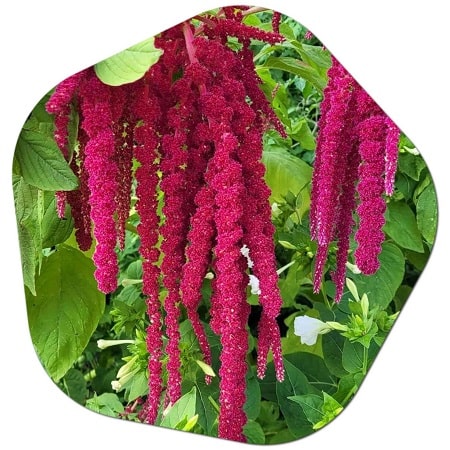Where does amaranth grow in America?
What is amaranth seed and what is it good for? What is Amaranth? What are the Benefits? Amaranth seed is a food that is frequently consumed especially in South American countries, its homeland. It is possible to see this grain popped and sold on the streets like corn. This grain is a substance used to prepare breakfast porridge in regions such as Nepal, India, Mexico, Peru.
What is amaranth and what does it do? Amaranth seeds, which can be red, golden or green in color, are considered one of the most nutritious grains available. They contain more protein than cereals and legumes and are also rich in dietary fiber, magnesium, iron, phosphorus, potassium and especially calcium.

Amaranth is a versatile plant that can grow in various regions of North and South America. It is adaptable to different climates and soil types. In the United States, amaranth can be found growing in different states and regions. Here are some common locations where amaranth is known to grow:
- Southwestern United States:
- Amaranth can be found growing in states like Arizona, New Mexico, and Texas, where the climate is warm and arid.
- Central United States:
- States in the central part of the country, such as Kansas, Oklahoma, and Nebraska, may have suitable conditions for amaranth growth.
- Eastern United States:
- Amaranth can be found in various eastern states, including those with temperate climates. It may be grown as a summer crop in states like Illinois, Indiana, and Ohio.
- Southern United States:
- States in the southeastern part of the country, like Florida, Georgia, Louisiana, and the Carolinas, provide favorable conditions for amaranth cultivation.
- California:
- The diverse climates of California offer suitable conditions for growing amaranth. It may be found in both northern and southern parts of the state.
- South America:
- While not in the United States, it’s worth noting that amaranth is a native plant in parts of South America. It has been cultivated for centuries in countries such as Peru and Bolivia.
Amaranth is known for its adaptability and ability to thrive in diverse environments. The specific species of amaranth and its cultivars may have different preferences for climate and soil, but in general, it is a plant that can be grown in a wide range of conditions. It’s important to consider the local climate and soil characteristics when cultivating amaranth to ensure optimal growth. Where does amaranth grow in the United States? >>
Does amaranth seed lose weight?
Thanks to its high fiber content, it helps to increase bowel movements. By helping to keep full with its high protein and fiber content, its weight loss feature can be used in slimming diets. It seems there might be some confusion in your question. If you are referring to the viability or the potential for amaranth seeds to lose their ability to germinate over time, it’s essential to understand that the viability of seeds, including amaranth seeds, can decrease over time, but the rate at which this happens depends on various factors.
Seeds are living organisms, and their viability can be affected by factors such as storage conditions, humidity, temperature, and the specific characteristics of the seed species. Amaranth seeds, like many other seeds, should be stored properly to maintain their viability.
Here are some general tips to help preserve the viability of amaranth seeds:
- Dry Storage:
- Store amaranth seeds in a cool, dry place. Exposure to moisture can reduce their viability.
- Temperature:
- Keep the storage temperature relatively low. Cool temperatures can slow down the aging process of seeds.
- Airtight Containers:
- Use airtight containers or seed storage bags to prevent exposure to air and humidity.
- Dark Storage:
- Store seeds in a dark place to protect them from light, which can also affect seed viability.
- Regular Germination Tests:
- Periodically perform germination tests on a small sample of seeds to check their viability. This involves planting a few seeds and observing how many successfully germinate.
While amaranth seeds, like other seeds, may gradually lose viability over time, proper storage practices can significantly extend their shelf life. If you’re planning to save amaranth seeds for future planting, consider storing them in a cool, dark, and dry place in a sealed container.
If, on the other hand, you meant something different by “weaken” in the context of amaranth seeds, please provide additional clarification, and I’ll do my best to assist you





